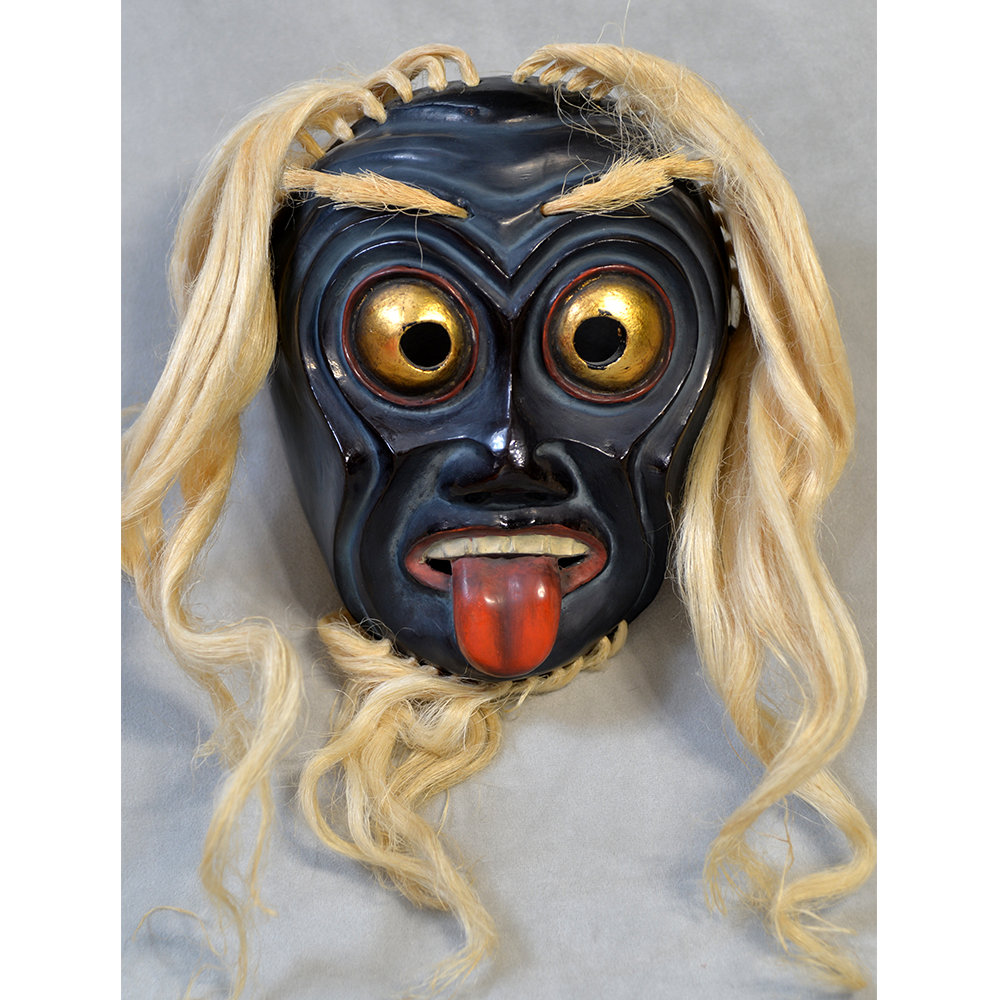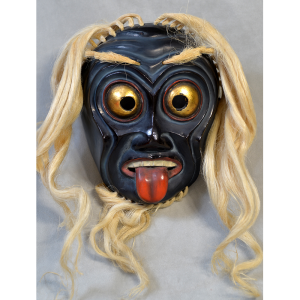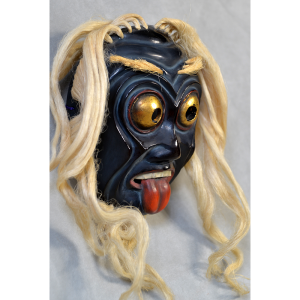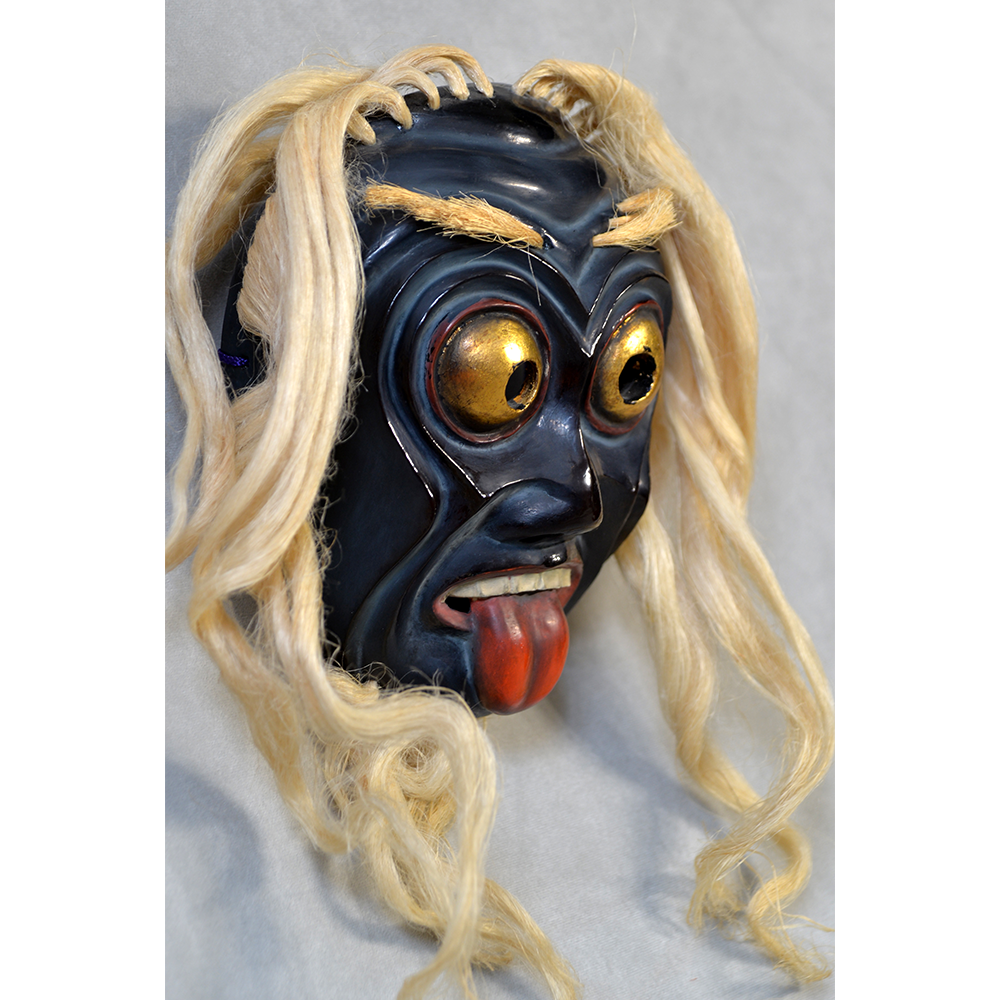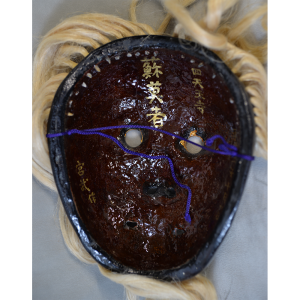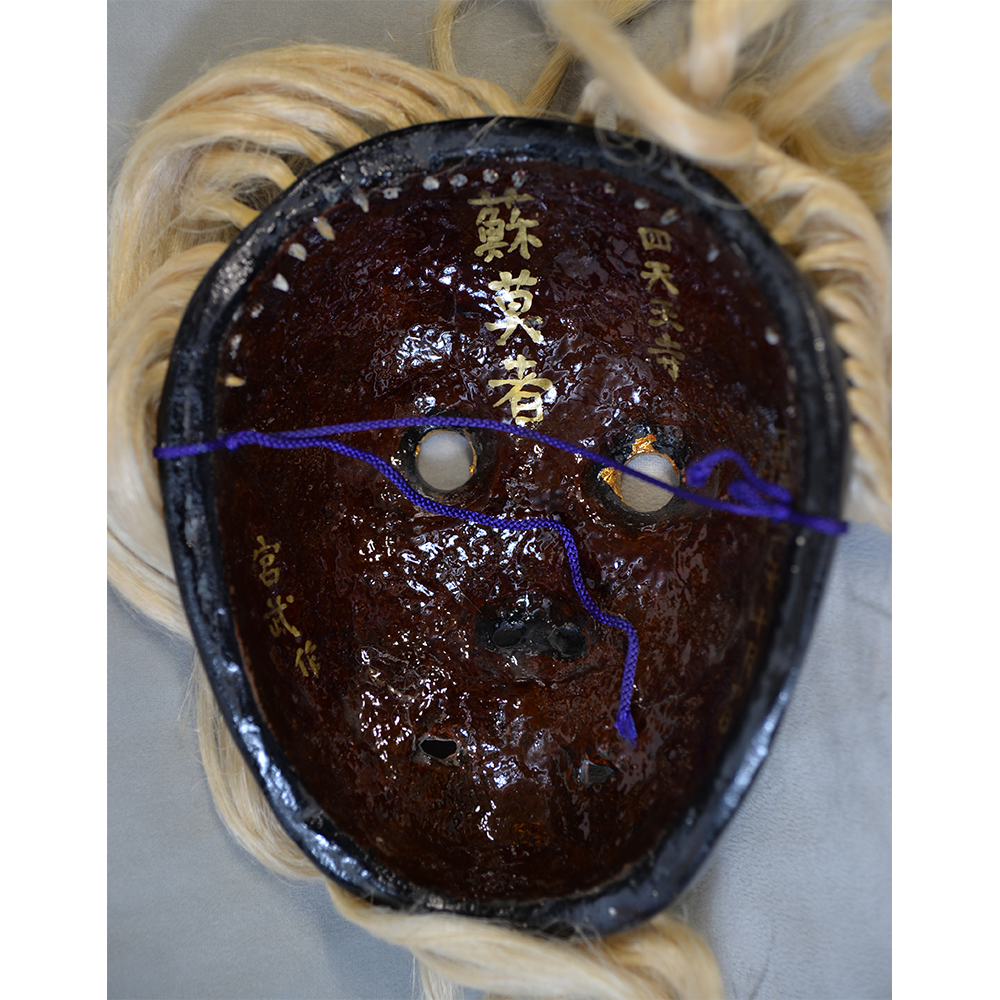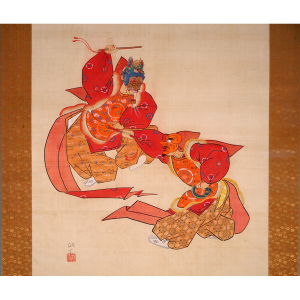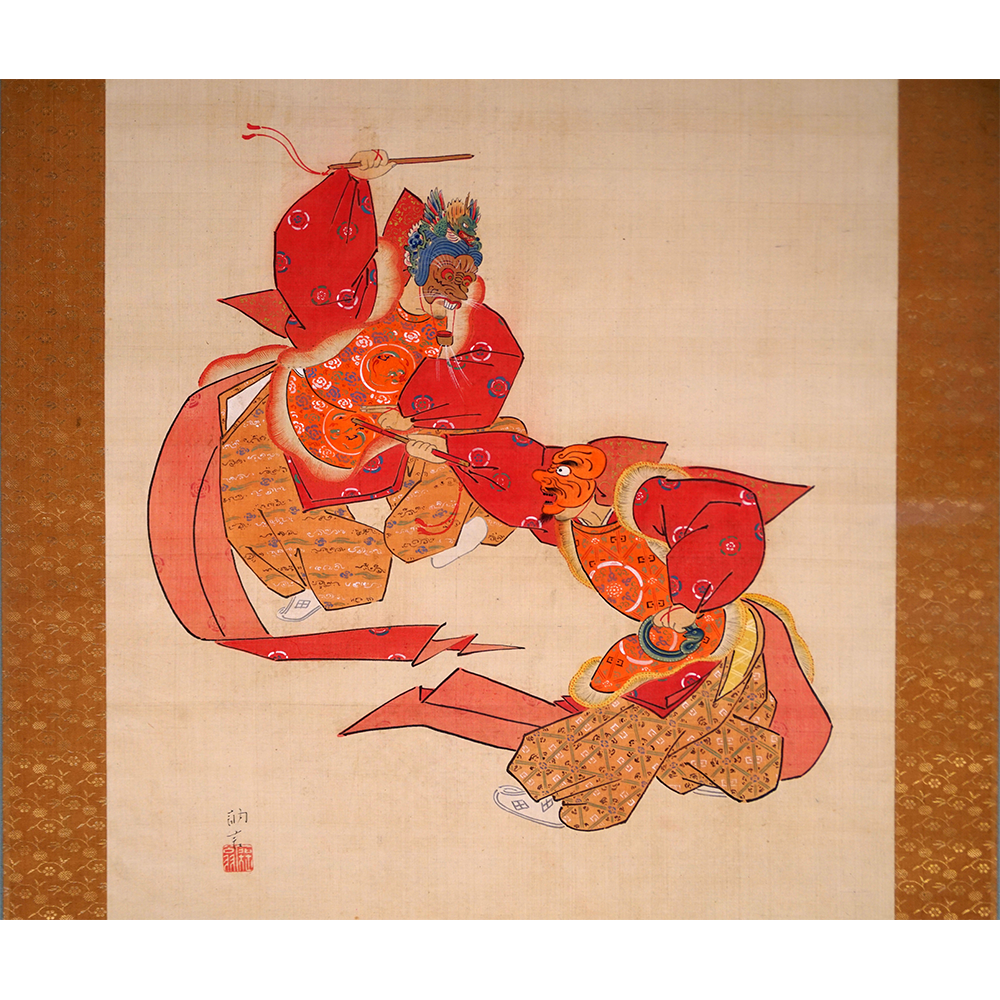TITLE: Bugaku Somakusha
TYPE: face mask
GENERAL REGION: Asia
COUNTRY: Japan
SUBREGION: Osaka Prefecture
ETHNICITY: Japanese
DESCRIPTION: Somakusha Mask
CATALOG ID: ASJP002
MAKER: “Miyatake”
CEREMONY: Bugaku
AGE: 1990
MAIN MATERIAL: kanshitsu
OTHER MATERIALS: lacquer; kaolin clay; gold leaf; plant fiber; horse hair
Bugaku is an official court dance of Japan, dating back to about 500 C.E. During the Heian period, Bugaku dances were so central to protocol that nearly all ceremonies and festivals included them. The dance was especially important in appeasing angry gods, purifying the village, and petitioning the gods for rain or a good harvest. The dance is performed to the music of drums and flutes. The dancers enter the stage singly in succession, then dance together in pairs, in synchronicity to varying tempos. Each dance has its own mask and is named after the mask.
Bugaku masks were sometimes made of wood, and sometimes (like this one) made from kanshitsu, a composite of sawdust and resin shaped over a mold. This mask is a near replica of one from the 1920s or 1930s kept in the Shitennō-ji Temple in Osaka.
The Somakusha is thought to represent the god of a mountain who dances for a flute playing hermit who descended from the mountain after his devotions there.
For more on Bugaku masks, see Kyōtarō Nishikawa, Bugaku Masks (Tokyo: Kodansha International Ltd. 1971).
Click above to watch a short documentary film about the Bugaku dance of Japan.
